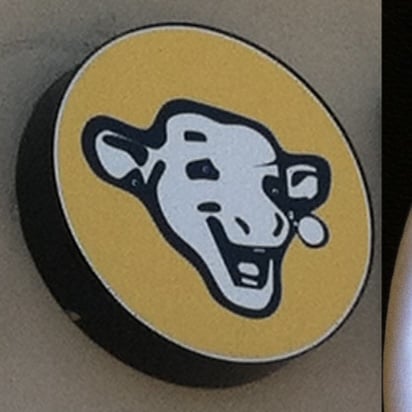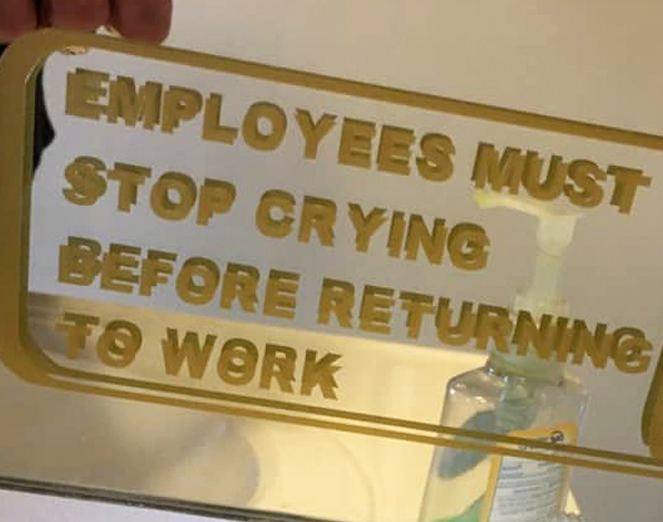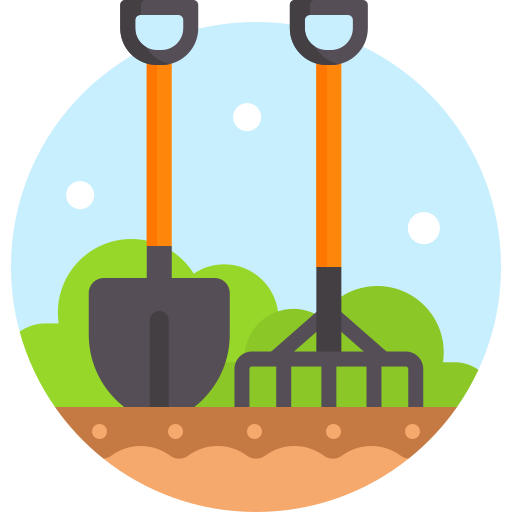is this real?
“The future ain’t what it used to be.”
-Yogi Berra
- 92 Posts
- 1.63K Comments

 6·2 days ago
6·2 days agoThey know what they’ve got. Cash pony.

 126·2 days ago
126·2 days agoFederated solutions which can’t be stopped, self hosted, and available via Fdroid.
Only real answer.

 73·2 days ago
73·2 days agoCash only. I know what I’ve got.

 9·2 days ago
9·2 days agoI mean not a soul believes a single thing Israel says.
 151·3 days ago
151·3 days agome spending 3 minutes looking for Saddam Hussein:

Yeah but I really need to update the kernel
This one: https://lemmy.world/post/36614315

 5·4 days ago
5·4 days agoYou have been nominated the Sheriff of Lemmy.
Skeleton pruning is a method used on trees to maintain their structure by cutting back all shoots except the main scaffold branches and primary bole, while topping involves cutting off the entire top of a tree. Neither a skeleton prune or topping is going to be appropriate for all trees. It depends on species, context, and management goals. I would describe the prune in the picture as a skeleton prune. And for a Crepe Myrtle, its completely fine. That tree will be fine. They probably won’t have to manage it again for a couple seasons, and when they come back to it in a few years, they can do basically the same prune, and it will probably be just fine.
Its aggressive, and its not pretty for a few months after it happens, but species like Crepe Myrtle, are extremely robust. Its literally why people put them in parking lots. Could you do that do an oak or a redwood? No freaking way. But this isn’t an oak or a redwood. Its a fucking shit big-box store, throw-away, practically plastic Crepe Myrtle. You plant these specifically because you can management his aggressively. I
Your personal experience as an individual arborist doesn’t necessarily map to how people who manage hundreds to thousands of trees need to think about these things. If you are managing a parking lot (or hundreds of parking lots), you need to not drop branches on cars or people. Its a primary consideration of the management goals. Sure they want trees, but if it came down between having trees and getting sued for having even one limb dropping on someones car, they’ll pull the trees in a heartbeat. Extreme pruning, like a skeleton prune, absolutely puts the health of the tree at risk; but that’s sometimes an acceptable risk to take when the alternative is not having trees at all in some environments.
You may have experience but if you were trained incorrectly that doesn’t mean much.
Man you are insufferable.
Yes, but also, species like Crape myrtle can handle it just fine. It lets you get thicker, stronger primary branches, and one of the primary considerations, especially with trees managed in the public right of way, is “will this tree drop a limb on someones head (or dog, or car), and will we be sued for it?”
Crape myrtles are basically decorations for the equivalent of an ecological toilet which is most urban/ suburban environments. They’re used in places almost no other species would survive, specifically because they can handle the abuse. Many managers would rather do a more severe prune, which might kill the tree, but will prevent them from having additional liability. Not all species can handle this kind of aggressive pruning, especially ones not brought into cultivation by humans, and any wound to a tree puts it at risk from disease, but especially species which humanity have taken far outside of the ecological context the evolved in, these species basically require extreme pruning (apples, pears, some cherries and plums, and some citrus). They don’t necessarily self limb effectively, and without management, almost inevitably will rip themselves apart under their own weight. Its a bigger issue in especially windy areas.
backed by ample research.
You keep confusing topping with skeleton pruning. At no point have I argued that trees should be topped. I’m making a specific point, about a specific prune (the skeleton prune, which is NOT a topping), about specific types of trees (street trees selected for durability, and often times selectively bred to a point where they don’t self prune effectively), in a specific context (the places we use those kinds of trees, like parking lots and side walks).
Because I too have extensive experience with street trees, street tree management, and also, evaluating the health of trees. And not just one at a time, but hundreds of thousands at a time. I’ve done projects across the US with Davie Tree, and municipalities across looking at street trees, evaluating their health, and yes, also trying to capture some specifics like primary bole and other variables like height from ground to lowest branch. I literally built the tree dataset this study here, is based on. We mapped every tree, primary bole, and lowest branch height, for every street tree in the entirety of Louisville KY.
Pruning is used to reduce the risk of catastrophic branch loss/ removal of hazard branches, and the skeleton prune slows tree growth down to further establish primary boles and reduce the overall risk of branch loss/ hazard limbs. If we don’t prune street trees, they have the strong potential to become hazard vegetation which then requires significantly more extreme management, like whole tree removal.
I wouldn’t call that an authoritative source, and its clearly got its own bias. I’m not suggesting all trees are well supported by the skeleton prune, but for things like crape myrtles, and specifically, species that are selected for harsh environments, like where you would plant a crape myrtle, are species that not only can survive or even benefit from a skeleton prune, but that you literally can’t manage a tree into “old age” with out the kind of de-limbing that something like a skeleton prune offers in these specific environments.
Trees didn’t evolve to live in parking lots or tiny strips of soil between a sidewalk and the street. We select for species that can survive these extreme conditions. Those species generally can handle/ or even thrive with a skeleton prune. The case in point is the example this post is about, the crape myrtle.
Another example is citrus trees, especially the more heavily cultivated/ more heavily selected varieties. You quite literally need to skeleton prune these trees, maybe every 5-10 years to keep them productive. This is because we’ve taken them far away from whatever evolutionary trajectory they are on and turned them into basically pets. They don’t self prune or self manage effectively.
Misinformation? As in… you are/ were putting out misinformation?
Its not misinformation whatsoever to suggest that skeleton pruning is an important practice, and what you are doing is deceptive. Skeleton pruning isn’t just a regular horticultural practice, but quite literally, hundreds and thousands of species simply will tear themselves apart without regular, extreme pruning.
We’re not talking about native plants in some particular ecological context where… well… plants just die some times. And thats fine.
We’re talking about human planted, human managed trees, completely outside of the ecological context they evolved in.
These are parking lot trees. We’re talking about species that are expected to survive in the equivalent of an ecological toilet. And yeah, they’ll destroy themselves without regular management. That’s how plants work.
it’s not bad for the tree, necessarily. Most horticultural monstrosities have been selected to basically depend on occasional massive prunings to keep themselves from ripping themselves to shreds over the years.
Even very large species can benefit immensely from an extreme prune, which simulates the kinds of massive catastrophic defoliation evens that happen in nature all the time (fires, hurricanes, tornadoes). It gives the fire branches of the tree more time to and get big with less load to bear.

































so brains, but smaller